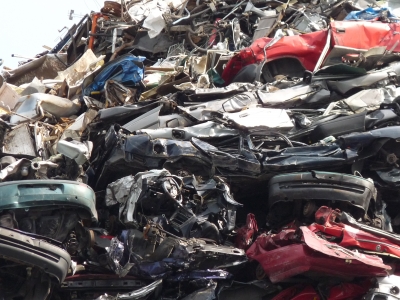During the webinar chaired by divisional President Greg Schnitzer of Schnitzer Steel Industries Inc. in the USA, Ms Featherstone explained that steelmaking accounted for as much as 10% of global carbon emissions and so producers were under mounting pressure to adopt an environmentally cleaner approach.
“The first logical step to reducing emissions when demand is growing is to recycle and reuse all available scrap,” she stated. “Only when we maximize scrap use do we significantly reduce overall virgin iron production and get emissions closer to government targets. This is why scrap is so important.”
Against this backdrop, the guest speaker argued: “Scrap collection has to be incentivized through the correct policy environment.”
While some virgin input would still be required to meet anticipated growth, Wood Mackenzie’s base case suggested that scrap could account for 33-35% of the steel industry’s total need for metallics by the year 2040, rising potentially as high as 47%. And although integrated steelmaking “will remain the main source of steel in China over the next two decades”, predicted Ms Featherstone, the share of global steelmaking claimed by electric furnaces could rise to 30% by 2026 and then to 34-35% by the year 2040, potentially heading as high as 52% outside of China and India in two decades from now.
Turning her attention to the nearer term, Ms Featherstone projected that global crude steel production was likely to take “at least five years” to recover to 2019 levels. Demand in China was forecast to fall only 1% in 2020 – “much better than people thought at the beginning of the year” – whereas a slump of 16% was anticipated for the rest of the world.
This analysis was followed by questions and observations from an invited panel, as well as by questions from the wider eForum audience. According to BIR President Tom Bird and Denis Reuter of Germany-based TSR Recycling GmbH & Co. KG, Ms Featherstone’s presentation highlighted the need for BIR and other recycling organizations to continue to press the case for free trade and the free flow of scrap around the world.
Fellow eForum panellist George Adams of SA Recycling in the USA contended that the scrap use hike projected by the guest speaker would apply such significant downward pressure on the iron ore price that its use in steelmaking could be encouraged. Focusing on latest developments in India, Zain Nathani of the Nathani Group of Companies acknowledged that some of the country’s leading steelmakers had been exporting substantial tonnages of semis to China during the lockdown, although he believed this was unlikely to develop into a long-term trend.
The huge environmental contribution of the ferrous scrap recycling industry was further stressed by divisional Statistics Advisor Rolf Willeke in presenting the recently launched 11th edition of “World Steel Recycling in Figures”. An estimated 630 million tonnes of steel scrap was recycled every year, preventing nearly 950 million tonnes of annual CO2 emissions that would have come from the production of virgin steel as well as saving energy and conserving natural resources, he pointed out.
Although remaining the world’s leading steel scrap importer in 2019, Turkey’s overseas purchases fell 8.7% to 18.857 million tonnes, Mr Willeke observed, with India in second place (+11.4% to 7.053 million tonnes). Also last year, the EU-28 remained the world’s leading steel scrap exporter in growing its outbound shipments by 0.6% to 21.793 million tonnes whereas global external steel scrap trade – including internal EU-28 trade – dropped 5.8% to 100.4 million tonnes.
ends










